Abstract
Two separate studies were carried out to determine if three visual analogue scales for various feelings including pain could be marked consistently by patients, without reference to previously completed scales. Sixty patients undergoing extraction of their lower third molars had measurements of acute preoperative anxiety, expected postoperative pain and postoperative perceived pain three times in quick succession. There was no significant difference between the three measurements for any of the feelings. Although a correlation was detected between expected pain and preoperative anxiety, there was no meaningful relationship between perceived postoperative pain and expected pain or preoperative anxiety. Eighty patients suffering from a wide range of chronic painful states completed three identical scales for pain, anxiety, depression and mood during their first visit. These measurements were repeated at a later time following a treatment, with the addition of a visual analogue scale for pain relief. Mean scores for anxiety, mood and pain relief were consistent, but mean pain scores were more variable. There was a very close correlation between any two feelings expressed on these visual analogue scales during both the initial and second visits. Litigation or social problems were not associated with increased pain scores.
Full text
PDF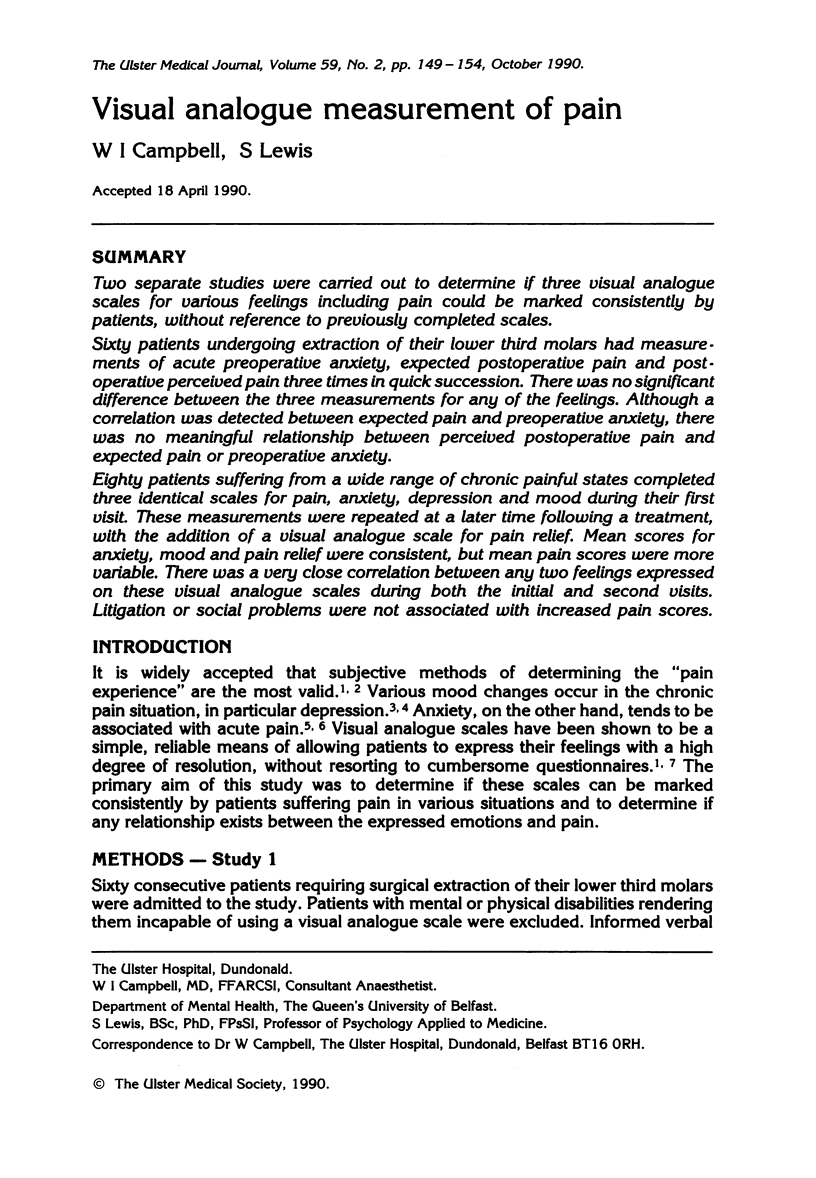
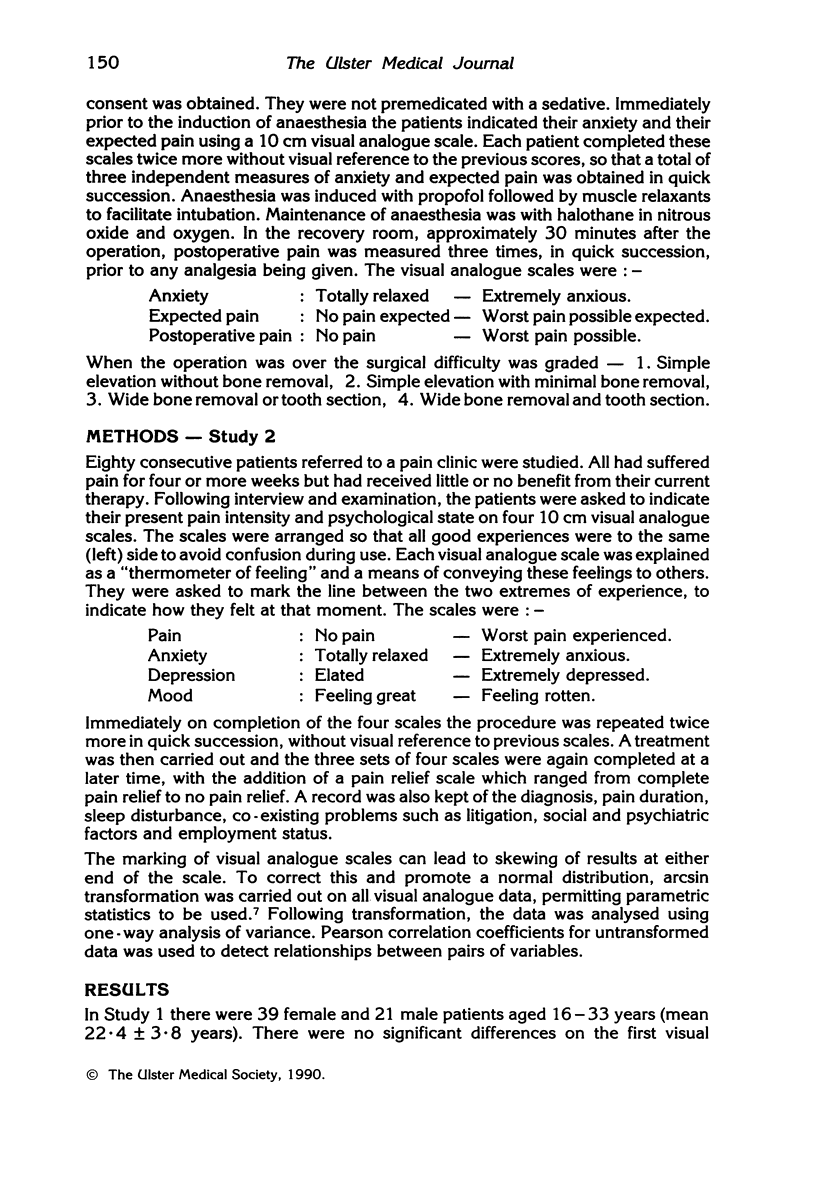
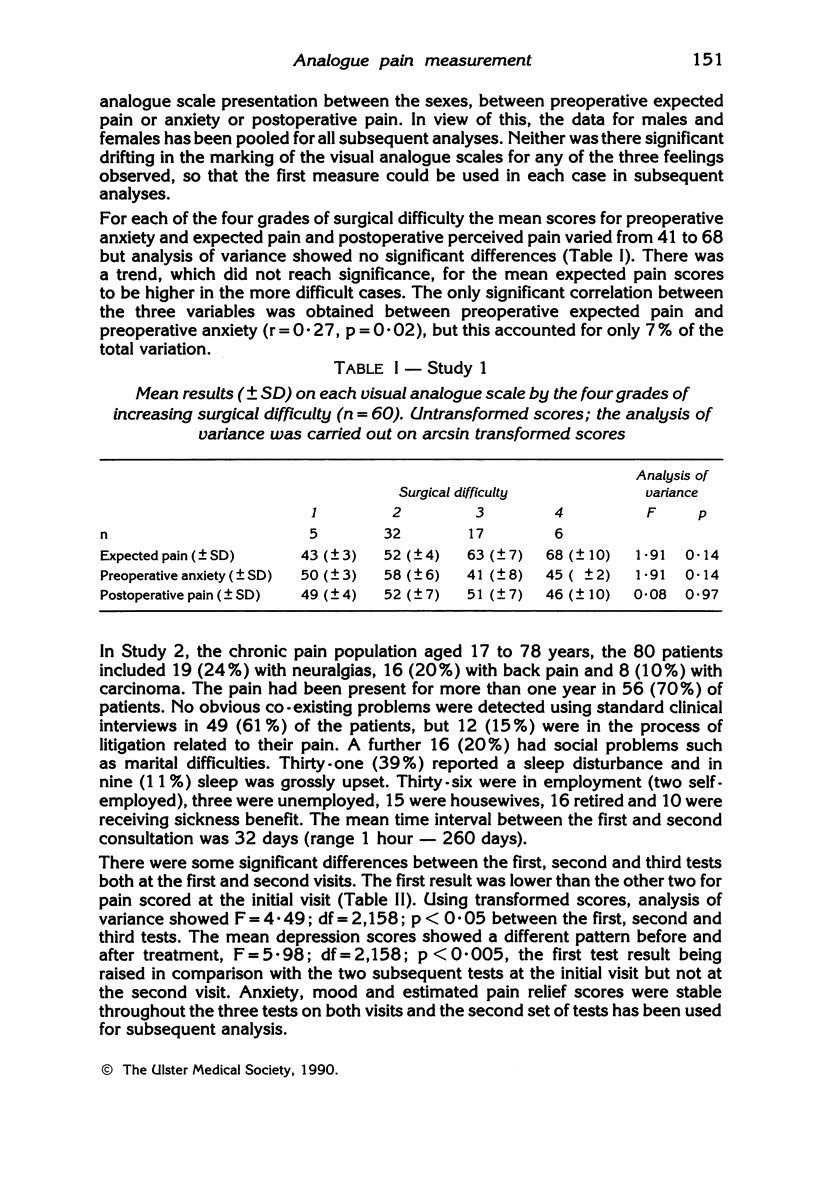
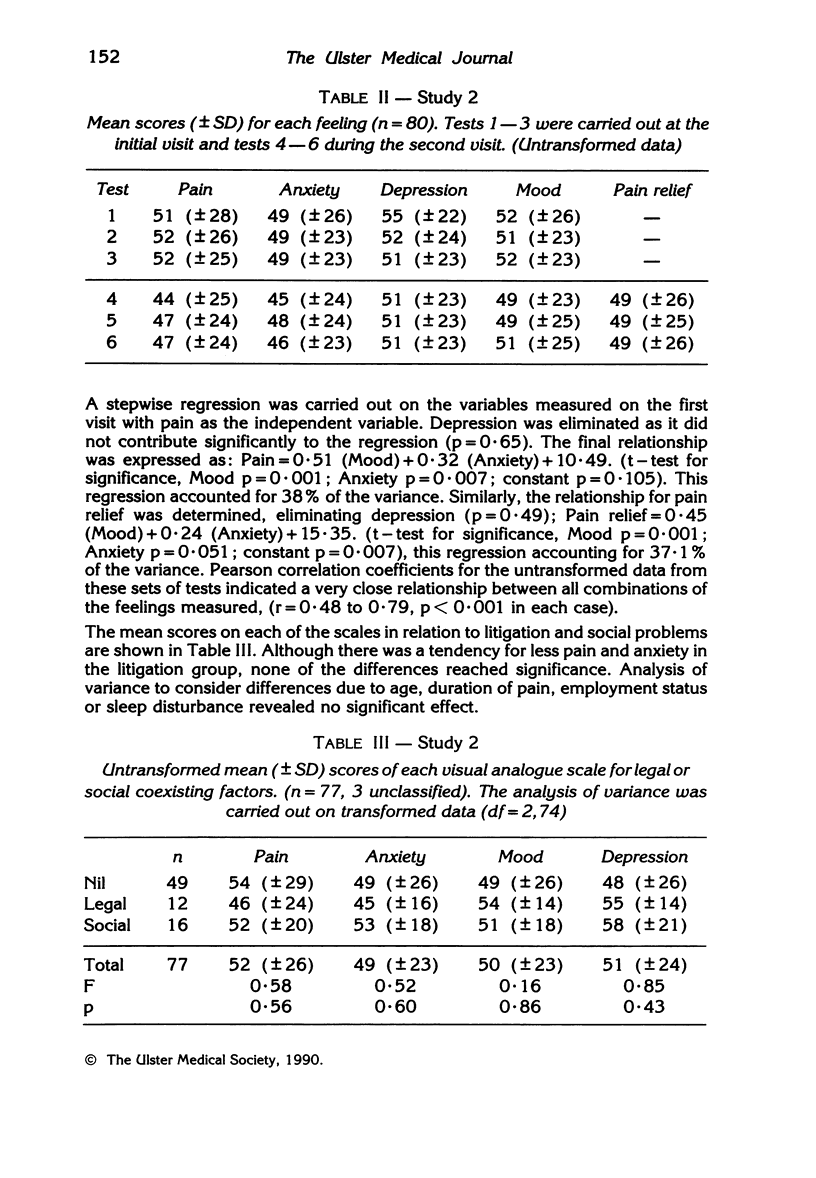
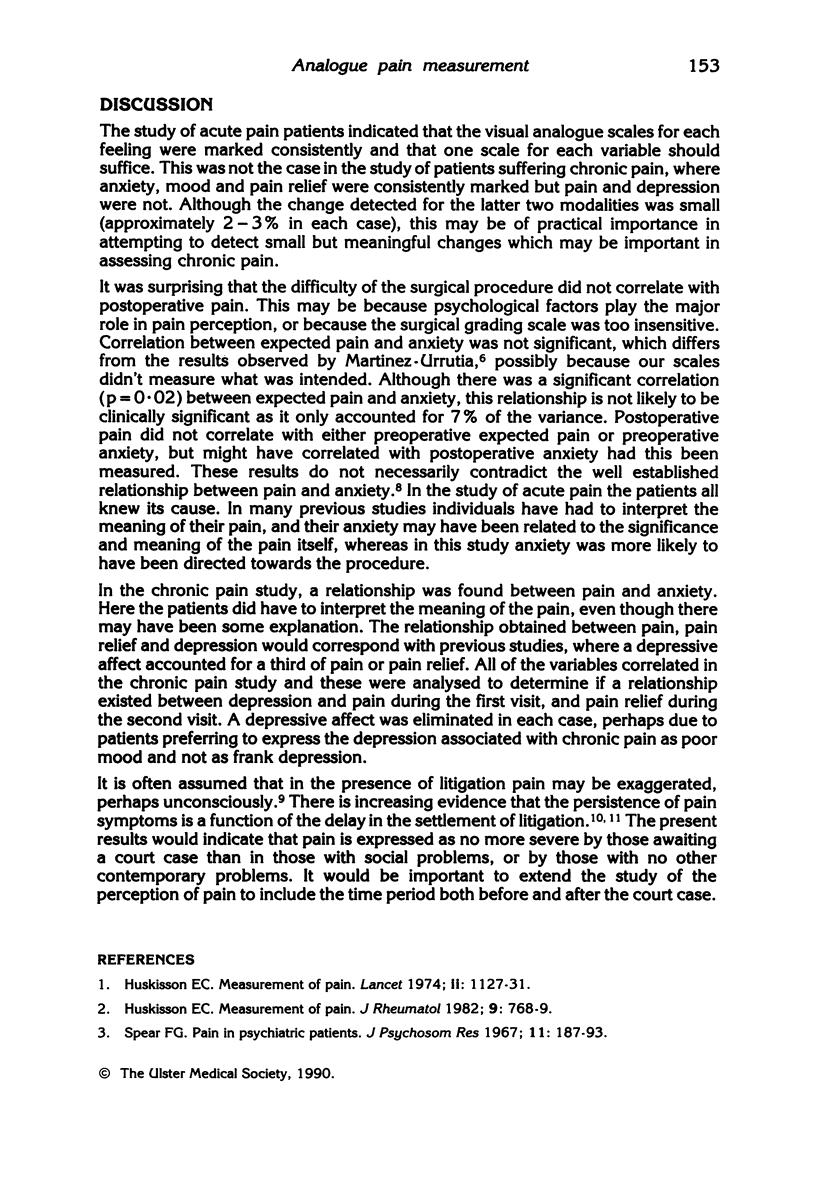
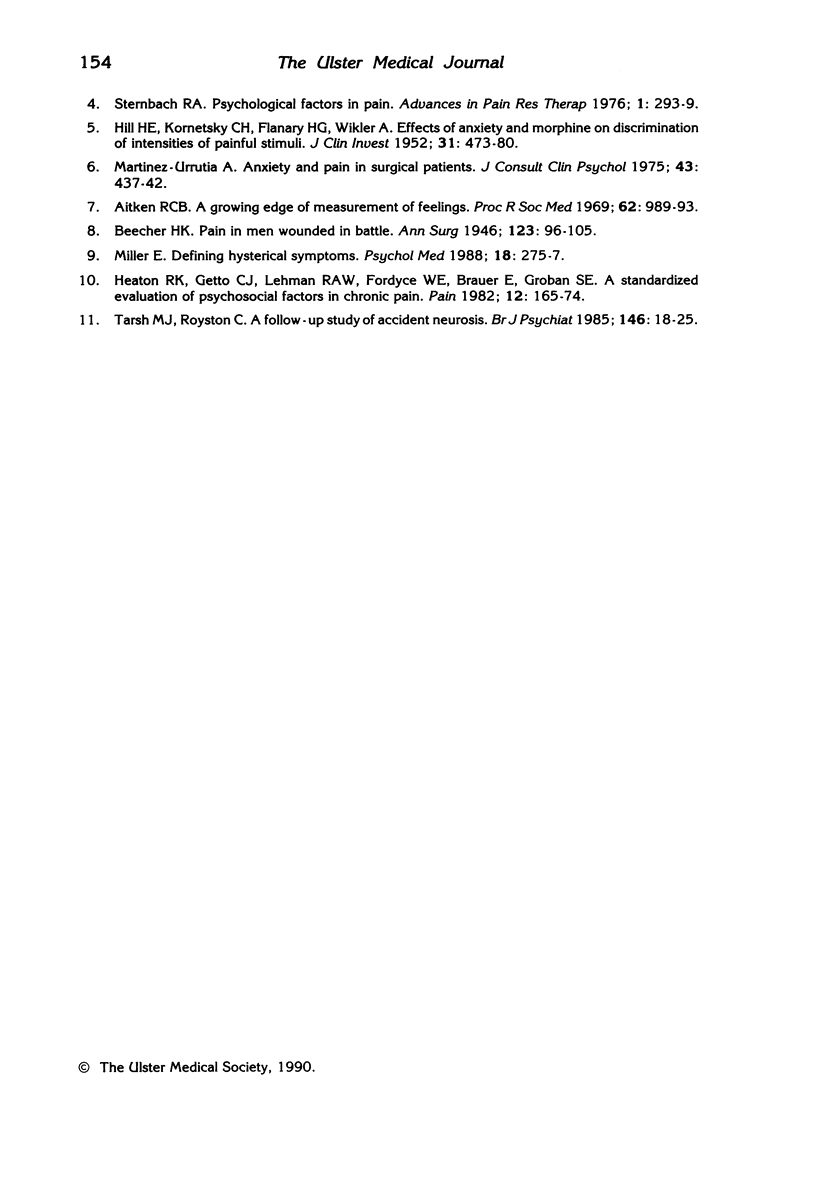
Selected References
These references are in PubMed. This may not be the complete list of references from this article.
- Aitken R. C. Measurement of feelings using visual analogue scales. Proc R Soc Med. 1969 Oct;62(10):989–993. doi: 10.1177/003591576906201005. [DOI] [PMC free article] [PubMed] [Google Scholar]
- Beecher H. K. Pain in Men Wounded in Battle. Ann Surg. 1946 Jan;123(1):96–105. [PMC free article] [PubMed] [Google Scholar]
- HILL H. E., KORNETSKY C. H., FLANARY H. G., WIKLER A. Effects of anxiety and morphine on discrimination of intensities of painful stimuli. J Clin Invest. 1952 May;31(5):473–480. doi: 10.1172/JCI102632. [DOI] [PMC free article] [PubMed] [Google Scholar]
- Heaton R. K., Getto C. J., Lehman R. A., Fordyce W. E., Brauer E., Groban S. E. A standardized evaluation of psychosocial factors in chronic pain. Pain. 1982 Feb;12(2):165–174. doi: 10.1016/0304-3959(82)90192-0. [DOI] [PubMed] [Google Scholar]
- Huskisson E. C. Measurement of pain. Lancet. 1974 Nov 9;2(7889):1127–1131. doi: 10.1016/s0140-6736(74)90884-8. [DOI] [PubMed] [Google Scholar]
- Huskisson E. C. Measurement of pain. J Rheumatol. 1982 Sep-Oct;9(5):768–769. [PubMed] [Google Scholar]
- Martinez-Urrutia A. Anxiety and pain in surgical patients. J Consult Clin Psychol. 1975 Aug;43(4):437–442. doi: 10.1037/h0076898. [DOI] [PubMed] [Google Scholar]
- Miller E. Defining hysterical symptoms. Psychol Med. 1988 May;18(2):275–277. doi: 10.1017/s0033291700007820. [DOI] [PubMed] [Google Scholar]
- Spear F. G. Pain in psychiatric patients. J Psychosom Res. 1967 Aug;11(2):187–193. doi: 10.1016/0022-3999(67)90006-2. [DOI] [PubMed] [Google Scholar]
- Tarsh M. J., Royston C. A follow-up study of accident neurosis. Br J Psychiatry. 1985 Jan;146:18–25. doi: 10.1192/bjp.146.1.18. [DOI] [PubMed] [Google Scholar]


